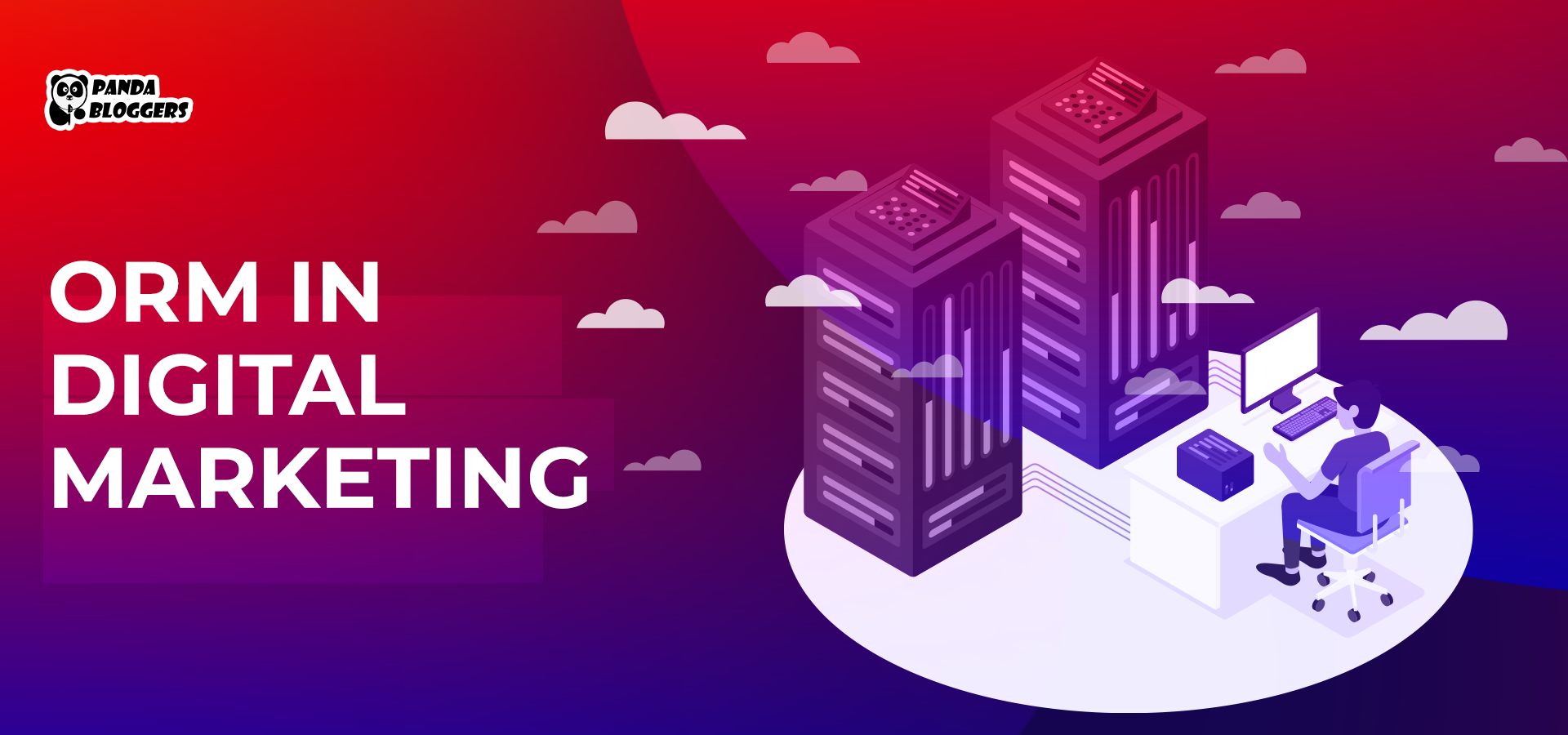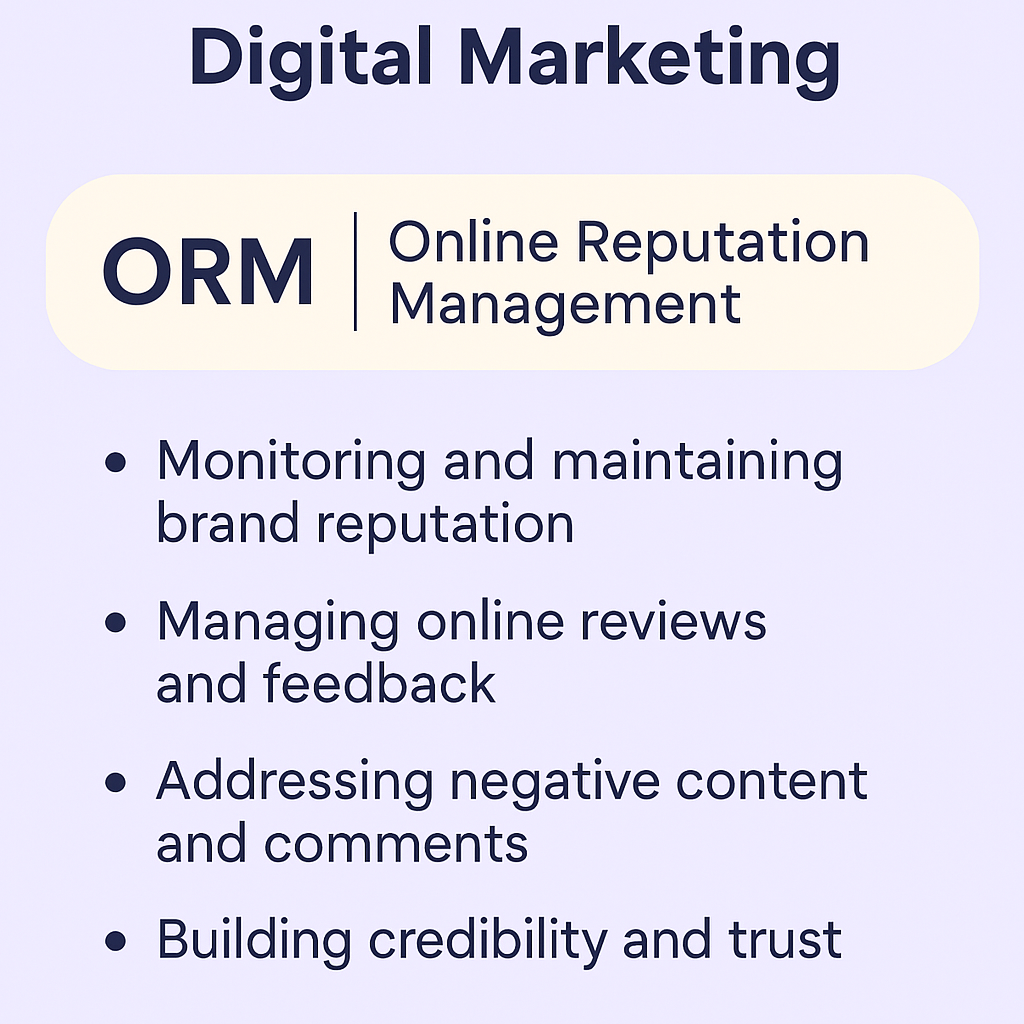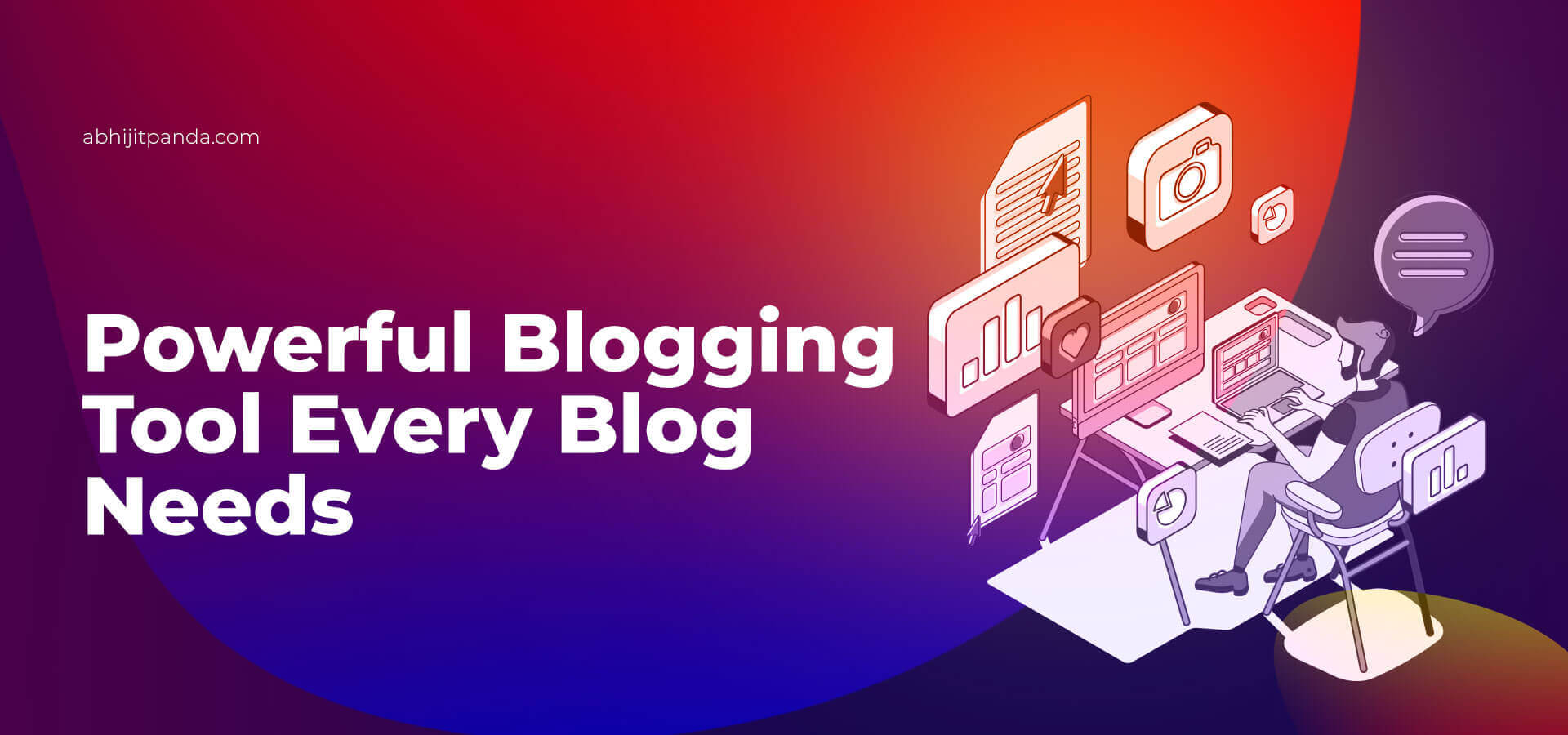 ORM in Digital Marketing
ORM in Digital Marketing
In addition to promoting brands, digital marketing helps them connect with potential customers. Brands these days connect with a wider customer base using top digital marketing channels. Also, they engage prospects and convert them into customers by running omnichannel digital marketing channels. However, no brand can make digital marketing campaigns successful without creating a positive online reputation or perception. While strategizing digital marketing campaigns, leading brands focus extensively on online reputation management. They further promote, manage, and monitor online reputation proactively by running targeted digital marketing campaigns.
Digital marketers create a positive perception of a brand by monitoring the opinions of existing and prospective customers across channels. Likewise, they shape customer opinion by implementing several online reputation management (ORM) tactics. We are discussing some of these strategies and tactics digital marketers use to manage and enhance a brand’s online reputation effectively.
ORM Full Form in Digital Marketing
ORM stands for Online Reputation Management in digital marketing. It refers to the practice of monitoring, influencing, and maintaining a brand’s or individual’s reputation on the internet. ORM involves various strategies, including managing online reviews, responding to customer feedback, and addressing negative content.
In the digital marketing landscape, ORM is essential for building credibility and trust. With consumers relying heavily on online reviews and social proof, businesses must actively manage their online presence to protect their brand image. Effective ORM strategies include content creation, review management, social media monitoring, and public relations efforts.
By proactively managing their reputation, businesses can enhance their credibility, attract more customers, and safeguard against potential PR crises.

ORM in Digital Marketing: 7 Strategies for Improving Online Reputation Management
Involve Multiple Categories of Media
While strategizing ORM in digital marketing, digital marketers consider and involve four categories of media – owned, earned, shared, and paid. They understand how prospects react to the information shared by the brand using owned media like websites, blogs, and social media pages. Earned media like review sites and online forums help them understand what customers read about a brand.
They track shared media, such as social networks, to determine what customers say about the brand. Paid media like online ads help them detect competitors’ attempts to impact the brand’s online reputation negatively. The involvement of key media categories helps digital marketers get a 3600 view of a brand’s virtual reputation regularly.
Push down Negative Search Results
Customers use search engines as the primary channel for gathering information about a brand. Hence, negative search results impact a brand’s online reputation and credibility hugely. Digital marketers drive ORM by running search engine optimization (SEO) campaigns. Their SEO strategy focuses on promoting positive information and pushing down negative information.
They push down negative information by publishing high-quality content like blogs and press releases. Also, they optimize the content by including targeted keywords used for disseminating negative information. At the same time, they improve a brand’s online reputation and credibility by gathering high-quality backlinks to positive content.
Distribute Thought Leadership Content
Thought leadership content refers to the articles and blogs created by industry leaders and subject matter experts. In addition to educating and entertaining the target audience, thought leadership content provides unique opinions and differing viewpoints. While planning content marketing strategies, brands do not distribute thought leadership content intending to generate leads or drive sales.
Instead, thought leadership content helps brands share valuable opinions and empower the targeted audience. As a credible source, thought leadership content helps brands build customer trust and shape their perceptions. Digital marketers enhance a brand’s online reputation and credibility by incorporating thought leadership content in content marketing strategies.
Strengthen Social Media Presence
Several studies suggest a consistent increase in the amount of time internet users spend daily on social networks. Many customers prefer social networks to search engines while gathering information about a brand. Digital marketers improve a brand’s online reputation by posting interesting and engaging content on social media regularly. Also, they connect with customers by responding to their comments, messages, and reviews.
At the same time, digital marketers continuously monitor the comments and reviews posted by social media users. The monitoring helps them detect negative reviews and comments posted by a customer without any delay. Digital marketers protect and enhance the brand’s online reputation by responding to negative comments and reviews proactively and professionally. The response creates a positive perception by showcasing how a brand values customer feedback.
Minimize Impact of Negative Reviews
Many online forums and sites create opportunities for customers to review products, services, and brands. Customers leverage these online platforms to post both positive and negative reviews. Brands find it challenging to eliminate the impact of negative reviews on the purchase decisions of potential customers. Digital marketers overcome this challenge by monitoring negative reviews continuously.
They minimize the impact of negative reviews by responding to them promptly. At the same time, they enhance a brand’s online reputation by encouraging customers to post positive reviews. Leading brands increase the number of positive reviews by improving customer experiences and providing excellent customer service. These positive reviews impress potential customers by acting as social proof.
Leverage User-Generated Content
In the age of fake news, buyers trust user-generated content more than brand-generated content. Digital marketers gain customer trust by generating customer-generated content regularly. They encourage and incentivize customers to enhance a brand’s online reputation by posting reviews, testimonials, and social media content.
In addition, they enhance the online reputation and credibility by integrating user-generated content into digital marketing strategies. They foster brand-customer relationships by showing user-generated content on product pages and social media pages. Many digital marketers these days promote user-generated content by partnering with influencers and brand advocates. Also, they emphasize building a community around the user-generated content.
Ensure 24/7 Monitoring
Digital marketers make ORM a 24/7 activity by implementing robust online reputation management tools. The ORM tools automate important activities like social media monitoring, online review management, brand mention monitoring, and brand sentiment analysis. They send automated notifications and alerts each time a brand’s online reputation is impacted negatively.
At the same time, they help marketers shape customer perceptions and prevent brand crises by sharing data-driven insights. The real-time alerts and actionable insights help digital marketers address negative comments and feedback promptly and professionally. However, digital marketers always implement the best ORM tool by evaluating its core features and functionalities.
Key ORM Metrics to Track in Digital Marketing
To make your post more insightful and data-driven, add a section highlighting the key metrics used to measure ORM effectiveness.
Brand Sentiment Score: This metric measures the overall sentiment (positive, neutral, or negative) of online mentions related to your brand. Tools like Brand24 or Mention analyze social and review platforms to determine brand perception.
Share of Voice (SOV): SOV indicates how much of the online conversation is about your brand compared to competitors. A higher SOV signifies a stronger online presence.
Online Review Ratings: Platforms like Google My Business, Yelp, and Trustpilot play a major role in ORM. Monitoring average review scores and responding to feedback helps build trust.
Social Media Engagement: Likes, comments, and shares on social media platforms reflect audience sentiment and engagement. A decline in engagement may indicate reputation issues.
Brand Search Volume: Tracking the frequency of brand-related searches on search engines helps measure ORM success. An increase in searches often indicates positive brand awareness.
Best ORM Tools for Digital Marketing
To add practical value and SEO relevance, include a section highlighting the best ORM tools used by digital marketers.
Brand24
Brand24 is a real-time social listening tool that helps businesses track online mentions, sentiment, and brand perception. It offers detailed analytics on social media, news sites, and review platforms, making it easier to manage your online reputation effectively.
Reputation.com
Reputation.com is a comprehensive ORM platform designed for enterprise-level businesses. It offers review management, business listing optimization, and sentiment analysis. The platform also provides insightful reports to help brands measure their online presence.
Mention
Mention is a popular ORM tool used by businesses to monitor brand mentions across social media, blogs, and forums. It offers real-time alerts and analytics, making it easy to respond to feedback promptly and protect brand reputation.
Emerging Trends in ORM for Digital Marketing
To keep your post up-to-date, add a section on emerging ORM trends, highlighting how ORM practices are evolving in the digital marketing landscape.
AI-Powered Sentiment Analysis: Advanced AI tools now provide real-time sentiment analysis, helping brands identify negative trends before they escalate.
Influencer Reputation Management: Brands are increasingly focusing on managing the reputations of influencers they collaborate with. This ensures they partner with credible personalities.
Voice Search and ORM: As voice search grows, brands are optimizing their ORM strategies for voice-activated devices, ensuring positive brand mentions.
Proactive Reputation Building: Instead of only reacting to negative feedback, businesses are proactively building positive reputations through content marketing and PR.
Review Generation Strategies: Companies are implementing automated review request campaigns to boost positive feedback, enhancing their online credibility.
Conclusion
New-age digital marketing strategies focus on managing and improving a brand’s online reputation effectively. However, these strategies for improving ORM in digital marketing can be divided into four broad categories: search engine, social media, content, and reviews. Digital marketers use ORM tools to monitor a brand’s virtual reputation across digital channels. Also, the information and insights provided by these tech tools help them improve a brand’s online presence and reputation by shaping customer perception.









Leave a Reply